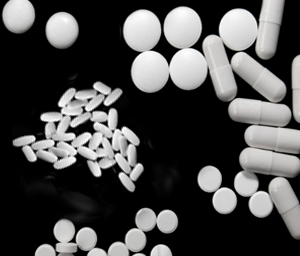Why Subcutaneous Hormone Replacement Therapy Pellets are Better than HRT Pills
While physicians still most commonly prescribe medications to patients that are taken orally, clinical studies have demonstrated time and time again that hormone replacement therapy is typically better when it is administered subcutaneously.
While oral medications must pass through the intestinal tract and liver to reach the patient’s bloodstream – subcutaneous HRT pellets are directly absorbed without being broken down by stomach acids or hepatic processes. Additionally, subcutaneous hormone replacement therapy (HRT) is better than oral HRT because it allows for a consistent and prolonged release of hormone with a single dosage.
In this article, the hormone therapy experts at SottoPelle Method – the original pioneers in HRT pellet therapy – explore the many reasons why subcutaneous pellets are preferable to pills for your patients’ hormone replacement needs. And why more and more doctors of every specialty are turning to SottoPelle Method physician subcutaneous hormone replacement therapy training – to improve patient outcomes and satisfaction with HRT treatment.
Benefits of Subcutaneous Hormone Replacement Therapy (HRT)
HRT Pellets Enable More Conservative Dosing
While oral HRT administration is still more commonly prescribed in healthcare, more and more physicians are obtaining advanced subcutaneous hormone replacement therapy training for the numerous benefits of hormone replacement therapy (HRT) pellets. While patients can achieve some of the desired results with oral forms of hormone replacement therapy, there are several benefits to taking a subcutaneous approach. Most notably, subcutaneous pellet therapy bypasses the metabolic first-pass effect that oral forms of HRT are associated with. This means they are more bioavailable for patients to absorb.
Oral HRT must be dissolved within the stomach for active ingredients to pass through the digestive system and get absorbed by the patient’s blood stream, where they are taken to the liver be processed. Due to hormones typically being compromised or removed by the liver’s hepatic processes, oral administration must me prescribed to the patient at a much higher dosage than a subcutaneous form of hormone replacement therapy.
However, when hormones are administered subcutaneously, they do not reach the liver until they have already moved through the bloodstream and yielded the desired results. This means that the pellets are not only more effective – but also safer, because they can be prescribed at more conservative dosages when administered subcutaneously.
HRT Pellets Are More Consistently Dosed
Another benefit of subcutaneous hormone replacement therapy is that it allows for prolonged and continuous release of hormones into the patient’s bloodstream. This both increases the patient outcomes and also results in greater patient compliance.
Testosterone and estradiol hormone pellets are created at 503B outsourcing facilities and are pressed into small cylinders, roughly the size of a grain of rice. These time-released pellets are inserted under the skin via a very small incision and allow for release of hormones as the patient needs them – just as the body does. The time-released HRT pellet delivery method prevents surges in hormones which can lead to undesirable side effects for patients.
In other words, subcutaneous HRT allows for a steady dose, as the patient needs it – rather than the roller coaster effect of oral HRT – which peaks when the pills are take, slumps throughout the rest of the day, and then peaks again the next day when the pill is taken.
Additionally, because there is no requirement for the patient to remember to take pills daily, or to replace patches on a regular basis, there is no possibility that the patient will forget a dose. Further, patients universally report greater satisfaction with pellets because the “one and done” administration means they can forget about their HRT – without daily pills or messy patches.
Research on Transdermal & Subcutaneous HRT
Recent clinical studies have also shown that there are certain significant health advantages to Subcutaneous HRT over oral delivery.
Transdermal Estrogen Lowers Triglycerides but Oral Estrogen Increases Them
Research on transdermal and subcutaneous forms of hormone replacement therapy (HRT) indicate that transdermal estrogen lowers triglyceride levels, but oral estrogen may increase them. As female patients enter menopause and experience a reduction in estrogen production, they are already at greater risk for cardiovascular issues. Estrogen pellet’s advantage of reducing rather than increasing triglyceride levels is therefore very significant.
A study conducted by JC Stevenson et al., of 96 women found that women who were prescribed a daily, oral form of estrogen had an increase in triglyceride levels and a decrease in glucose tolerance. While women given subcutaneous estrogen experienced lower triglyceride levels. The study took place over a course of 12 years. While both oral and transdermal estrogen both showed promising results in terms of preventing bone density issues, transdermal estrogen was deemed superior because of positive changes in cardiovascular metabolic markers.
Oral HRT Increases Risk of VTE but Transdermal HRT Does Not
Additionally, that study found that oral hormone replacement therapy (HRT) increased the risk of venous thromboembolism (VTE) but transdermal HRT did not.
The study concluded that HRT administered orally had a 70% great risk of VTE. But the transdermal HRT administration route appeared to be helpful in preventing instances of VTE in female patients. And another similar clinical research study found that transdermal HRT may be better for women who are at risk of VTE or are obese.
Subcutaneous Hormone Replacement Therapy Training
As physicians begin to realize that hormone pellets are the most effective hormone replacement therapy delivery method, they are seeking subcutaneous hormone replacement therapy training.
Testosterone and estradiol pellets are 100% natural, bio-identical forms of hormone. These pellets are inserted, on average, every 3-6 months in female patients and every 4-6 months in male patients. Patients do not need to remember to take pills or apply patches or creams. This gives physicians peace of mind in knowing that patient dosage errors or consistency problems are virtually non-existent.
The SottoPelle® Method of hormone replacement therapy training enables physicians to treat their patients as unique individuals and customize their dosage to address their specific needs with subcutaneous hormone pellets. Because of this, the most effective results are achieved with the fewest side effects.
Physician Hormone Replacement Therapy Training: 323.986.5100 (press 1)
Sources:
Clinical Trial Int J Fertil Menopausal Stud.. 1993;38 Suppl 1:30-5. Oral versus transdermal hormone replacement therapy. J C Stevenson 1, D Crook, I F Godsland, B Lees, M I Whitehead
Use of hormone replacement therapy and risk of venous thromboembolism: nested case-control studies using the QResearch and CPRD databases. BMJ 2019; 364 doi: https://doi.org/10.1136/bmj.k4810 (Published 09 January 2019).
IMPORTANT DISCLAIMER: This article is provided as general information only and is not intended to be used as medical advice. While the benefits of hormone replacement are well documented through clinical research, we are not representing that hormone therapy is a “cure” for any disease. Only your treating physician can determine if hormone replacement may be a beneficial part of your healthcare regimen, based on your age, overall health, risk factors, and lifestyle.


